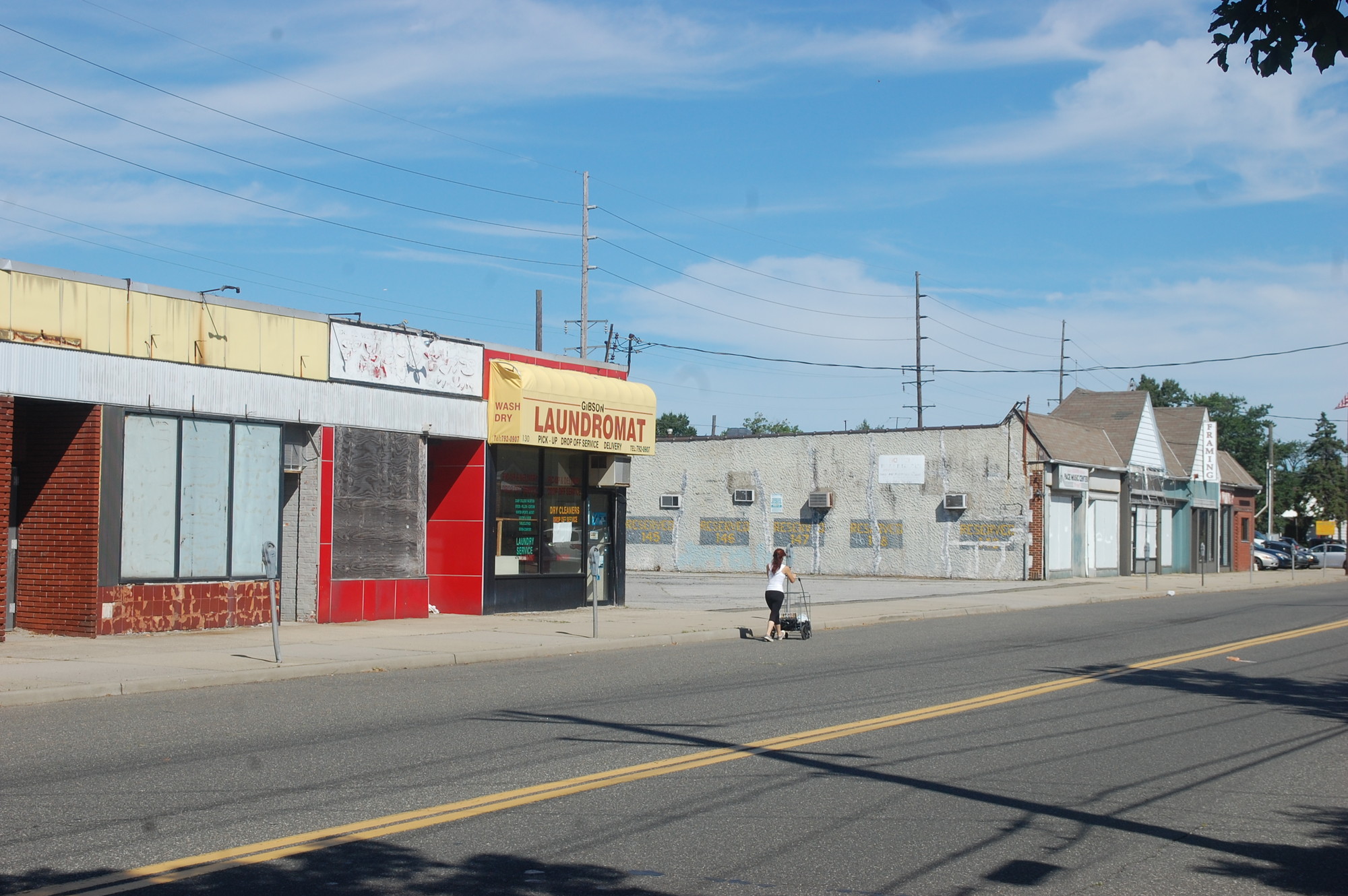Valley Stream considers eminent domain in Gibson
Valley Stream officials say they will try to have two vacant commercial buildings on Gibson Boulevard, which residents have been calling an eyesore for years, condemned.
Mayor Ed Fare said that the village was ready to invoke eminent domain months ago, but was informed by the owner’s attorney, Dominick Minerva Jr., that a deal to sell the land to another developer was in the works. The village held off, but Fare said he was recently informed that the deal had fallen through because the potential buyer backed out.
“We were very optimistic,” Fare said. “It was the best-sounding deal we ever had. Now that the deal has fallen apart, we’re going to revisit eminent domain again.”
In 2005, the Board of Zoning Appeals approved the construction of a condominium complex to replace the buildings, in which several businesses were still operating at the time. The developer, Dr. Leonard Bleicher, of Hewlett Harbor, later revised his plans for a scaled-down apartment building. Construction never began.
The leases on all the stores expired, and the buildings, which abut the Gibson train station, have sat empty for several years. The property has become a target for vandals, with windows broken and graffiti spray-painted on the buildings several times. Residents also noted that the site has been a popular place for teens to congregate at night.
“It’s just very sad,” said Valley Stream Community Association President Carol Crupi, who lives across the street. “It’s just so very bad for the neighborhood. It’s just so depressing to look at.”
Crupi said she bought her home in 2006, expecting a nice condominium complex to be built across the street. Seven years later, she remains disappointed that the project never got under way and the property has continued to deteriorate.
Her neighbor, Alan Schaechter, was one of several residents who filed suit against the developer and the village over the approval of the initial plan. Schaechter said that residents were concerned about the variances that were granted by the BZA, allowing for greater housing density than the property was zoned for, and approving a building they felt was too big for the parcel.
Ultimately, a court ruled that the BZA had the right to determine what development was appropriate for the community, and that Bleicher would be able to proceed. Schaechter acknowledges that he has been criticized by several people, including village officials, who said he is responsible for stopping the project by leading the lawsuit. He disputes the argument that he is to blame for the state of the property.
“I wasn’t the only one,” Schaechter said. “The community was against this at the time. The Board of Zoning Appeals gave [Bleicher] variances for everything.”
About a year ago, a “For Sale” sign went up on the property, between the two buildings. At that point, the owner was asking for $3 million for the land, but Minerva said the price was negotiable.
Lev Kimyagarov, a representative of Massey Knakel, which listed the property, said it is currently off the market.
Fare said that while the village has not fielded many recent complaints about the property, he and members of the Board of Trustees still have it on their radar. He noted that village officials have tried to find developers who would be interested in purchasing and enhancing the property. Fare said that any developer could complete the project that has already been approved.
Neighbors say they would at least like to see the buildings torn down. Schaechter said that the village should force Bleicher to demolish them out of safety concerns, and added that doing so would make the property more valuable, since prospective developers would not have to worry about demolition costs. “It would be to his advantage to remove these stores and then sell it,” Schaechter said.
Crupi said that the village should consider taking over the property and using it to expand parking for the train station. “We really need the parking for the railroad,” she said. “The village could make a little money.”
The village has retained a law firm, Sahn Ward Coschignano and Baker, specifically for eminent domain cases. The firm assisted Valley Stream with its acquisition of the old Village Hall, on Rockaway Avenue, to serve as the new law enforcement annex, and Fare said that Gibson Boulevard could be their next case.
“The village can use eminent domain on blighted property,” said John Farrell, an associate at the firm. He explained that taking depressed land, with the intention of revitalizing it, is acceptable because it is considered an improvement to area residents’ quality of life.
Farrell cited cases in Suffolk County in which municipalities and developers have formed public-private partnerships to revitalize blighted areas, including a project led by the Town of Babylon, in Wyandanch, and a Town of Brookhaven project, in Ronkonkoma.
He noted that a municipality can not take the property simply to flip it to another owner. The village could bring another developer on board, but it would still have to remain a part of the project.
Fare said that whatever direction the village takes, he wants to keep the property on the tax rolls. His preference is a mixed-use development featuring stores and high-density housing, similar to Sun Valley, which is under construction at Sunrise Highway and Rockaway Avenue.
He added that the village can only do so much, and prefers a capitalistic approach in which an owner creates a proposal that is vetted by the BZA and the public. “You don’t want a government to dictate to a property owner how to develop their property,” he said. “You want them to follow the system.”

 66.0°,
Shallow Fog
66.0°,
Shallow Fog 




